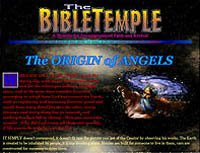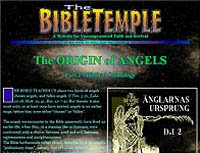 The Aramaic Enoch Scroll is a non-published, privately owned, complete copy of the Book of Enoch.
The Aramaic Enoch Scroll is a non-published, privately owned, complete copy of the Book of Enoch.There is no absolute public proof of its existence, but according to the former chief editor of the official Dead Sea Scrolls editorial team, John Strugnell (deseased 2007), the scroll is well preserved, and microfilmed. Strugnell was shown the microfilm in 1990, during the Kuwait crisis, but was never able to buy it for the editorial team.
Another person who has stated having seen the scroll or the microfilm, is Gerald Lankester Harding, who was the director of Jordan's Department of Antiquities (1936-1956).
QUMRAN CAVE 11
The scroll is said to have been found in the Qumran "Cave 11", in 1956, together with the other, already publicized scrolls and fragments. This cave was found by the same Bedouin, Abu Dahoud, who found the first cave in 1947.
Apart from this and another scroll from Cave 11 that Strugnell had seen personally, he had heard Harding speak of at least 2 never published scrolls from the same find. These, or some of them, were at that time (the Kuwait crisis) about to be bought by private, probably European collectors or bankers. The reason for buying them was for investments. Although Strugnell had arranged with serious buyers who would publicize the scrolls, he was not able to convince the owners to sell.
Abu Dahoud has confirmed that he and 10 other men found the cave, and sold the scrolls to many different people.
IMPORTANCE
The importance of a complete Aramaic manuscript of the Book of Enoch could be immense. A DSS scholar writes: "No trace of the Parables of Enoch has been discovered at Qumran, and it is widely considered today to be a composition of the later first century C.E. If a pre-Christian copy of the Parables were ever discovered, it would create a sensation".
The Parables is a part of the Ethiopian translation of the Book of Enoch. It is disputed how old it is and if it was originally a part of Enoch (although today most scholars believe it to be pre-Christian). If it was proven to have been a part of the original Aramaic book, it would mean that all of its prophecies concerning the coming Son of Man, which no one can mistake for non other than Jesus, would have been written before Jesus was born.
A complete aramaic book of Enoch would also correct possible translation errors in the Ethiopic versions.
___
Sources:
1. "An Interview with John Strugnell", Biblical Achaeology Review, july/aug 1994.
2. Avi Katzman, Understanding the Dead Sea Scrolls, p. 262.
3. N. Silberman, The Hidden Scrolls: Christianity, Judaism & the War for the Dead Sea Scrolls (1994), p.162.
4. g-megillot - Scholarly discussion of the Dead Sea Scrolls
5. Secrets of the Dead Sea Scrolls
6. A New Translation - The Dead Sea Scrolls, p. 279
7. James H. Charlesworth, The Old Testament Pseudepigrapha and the New Testament, (1985), p. 89.
___




